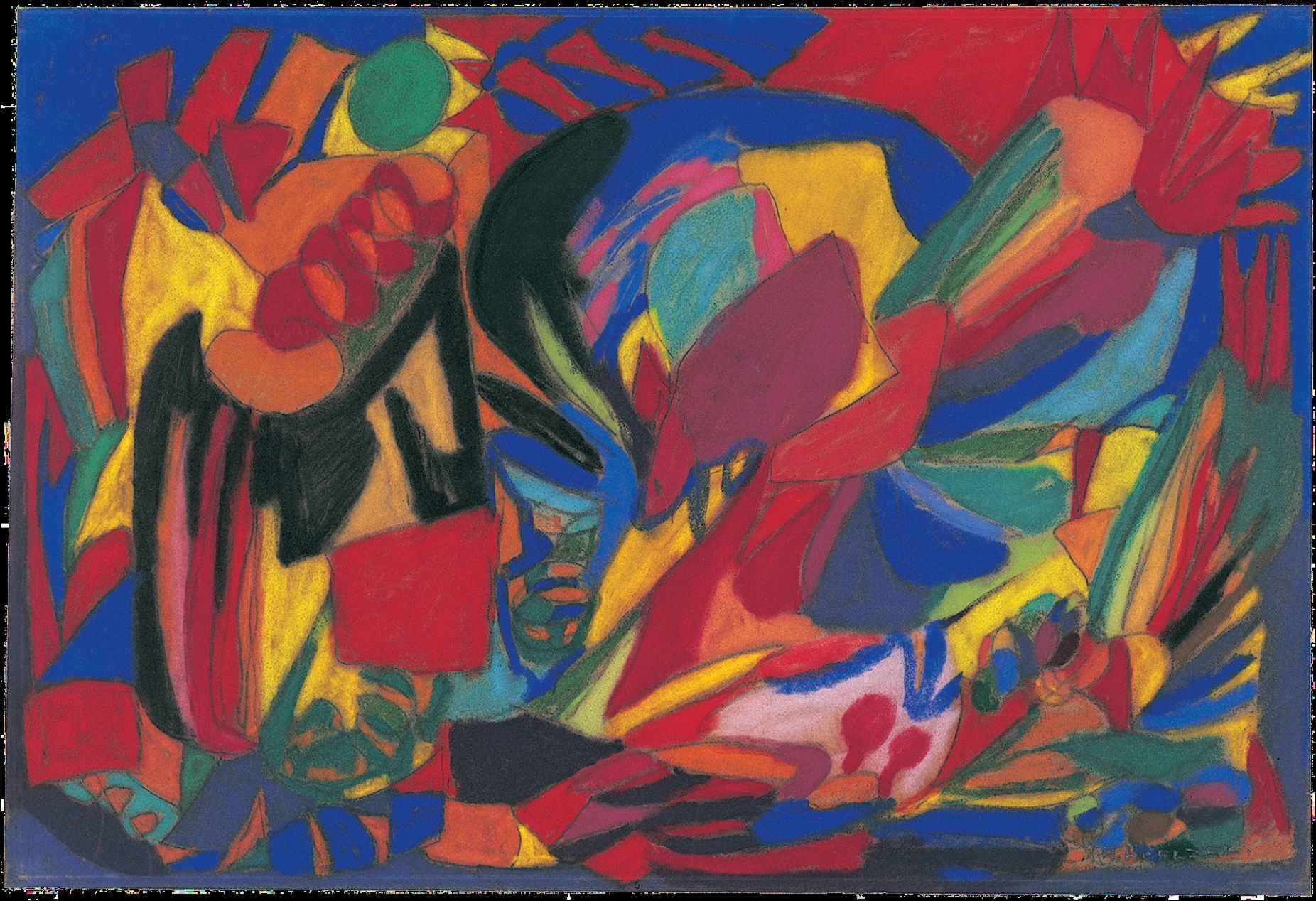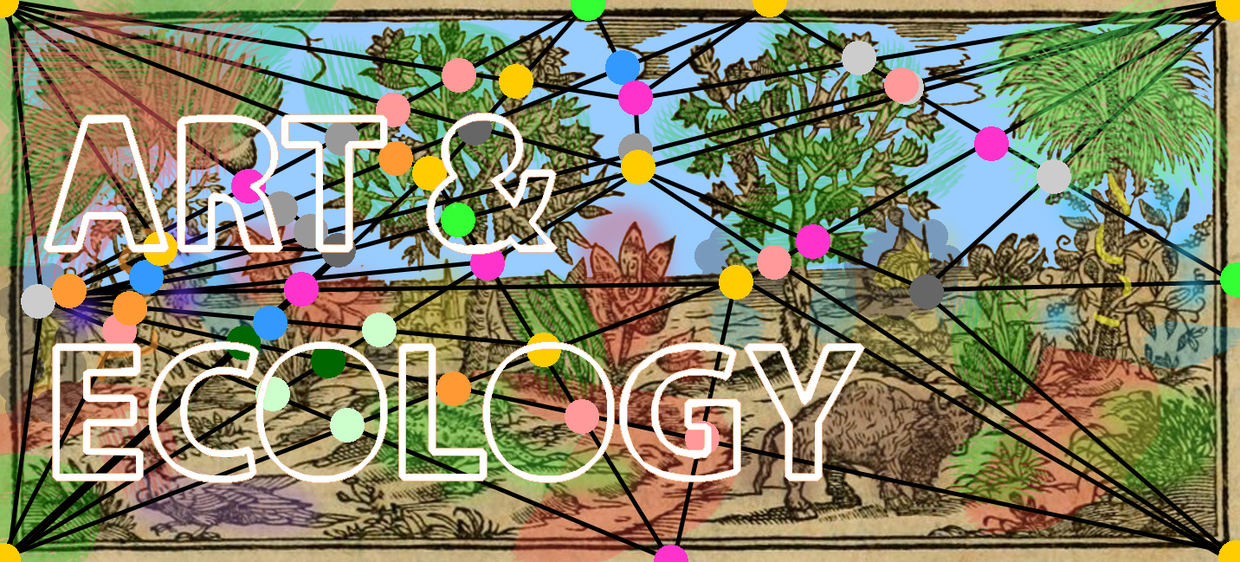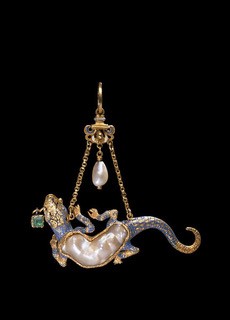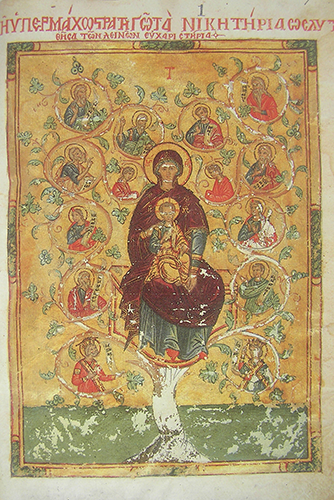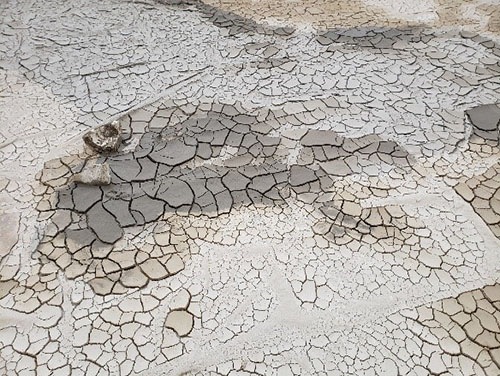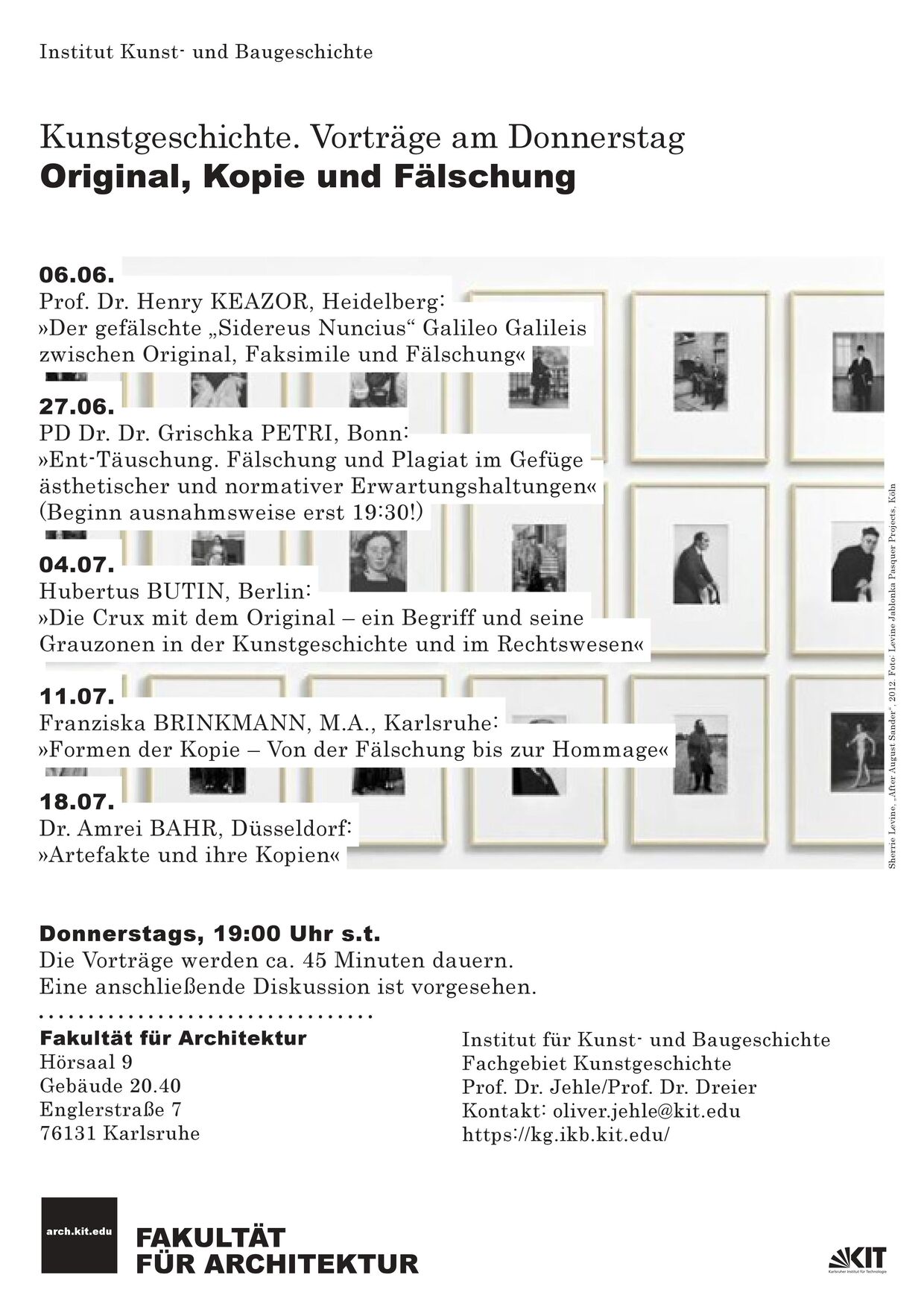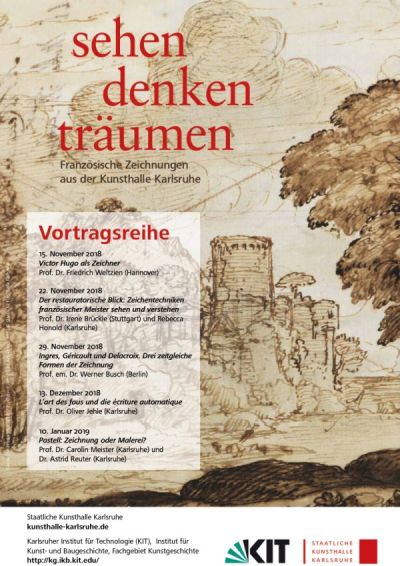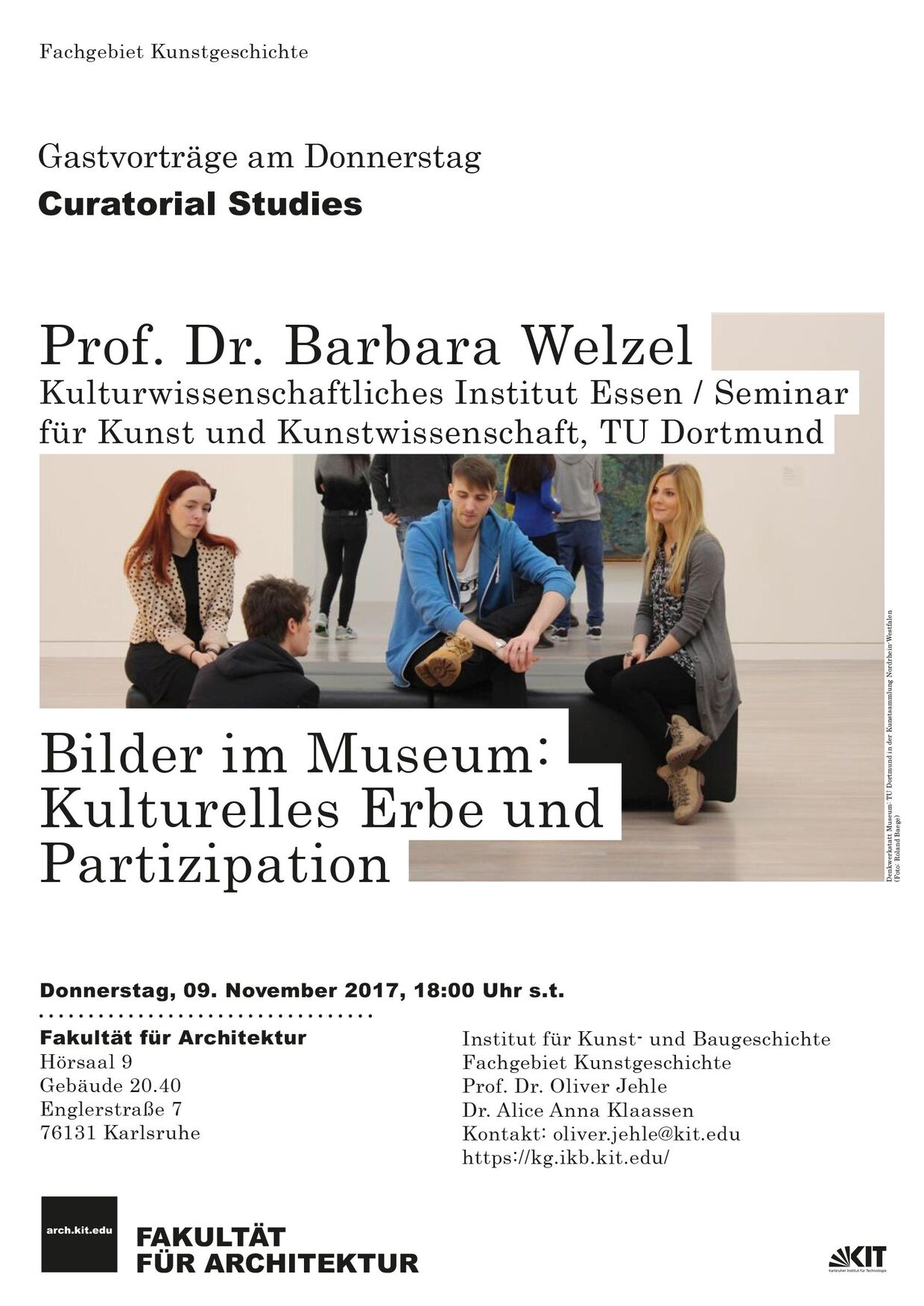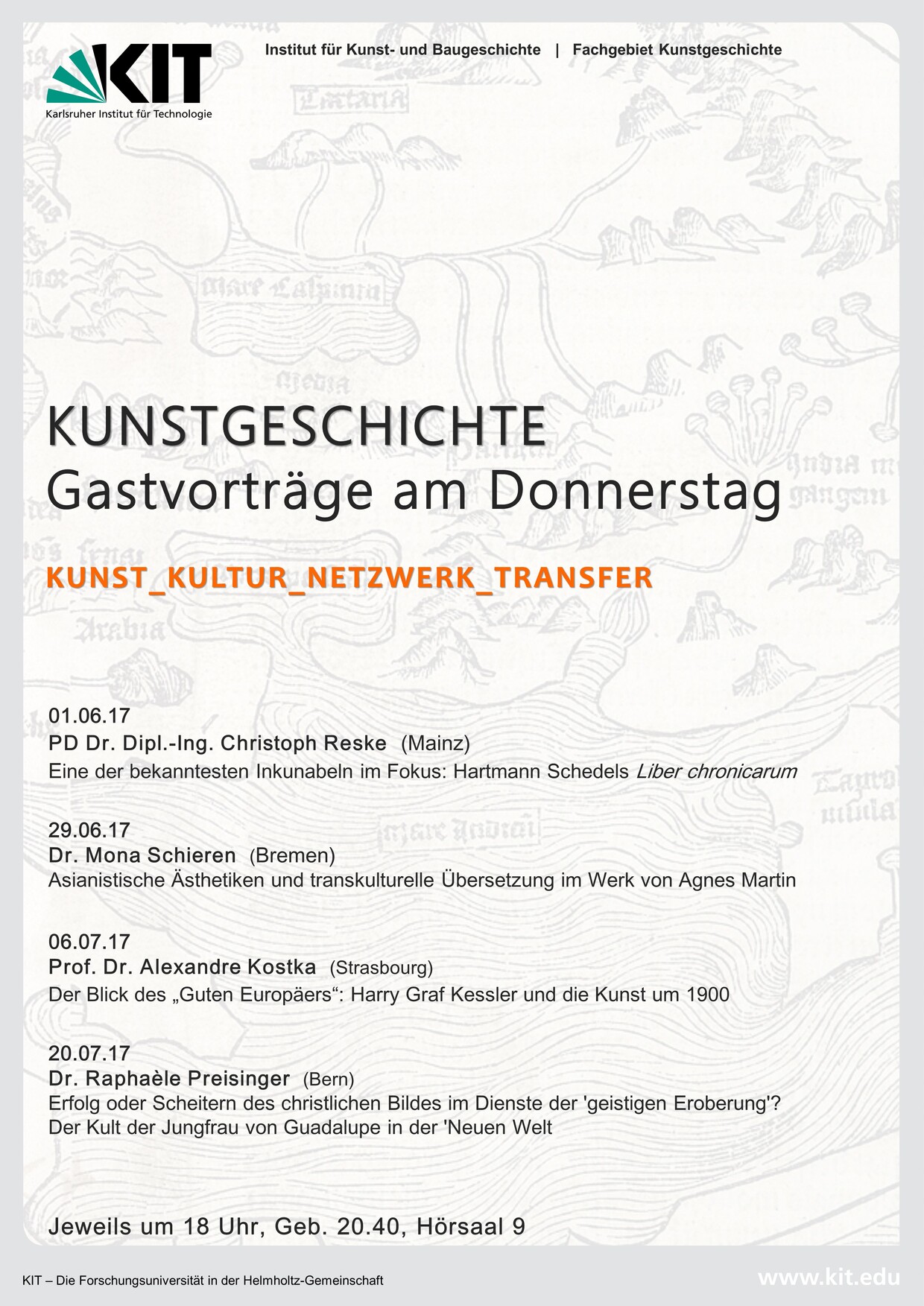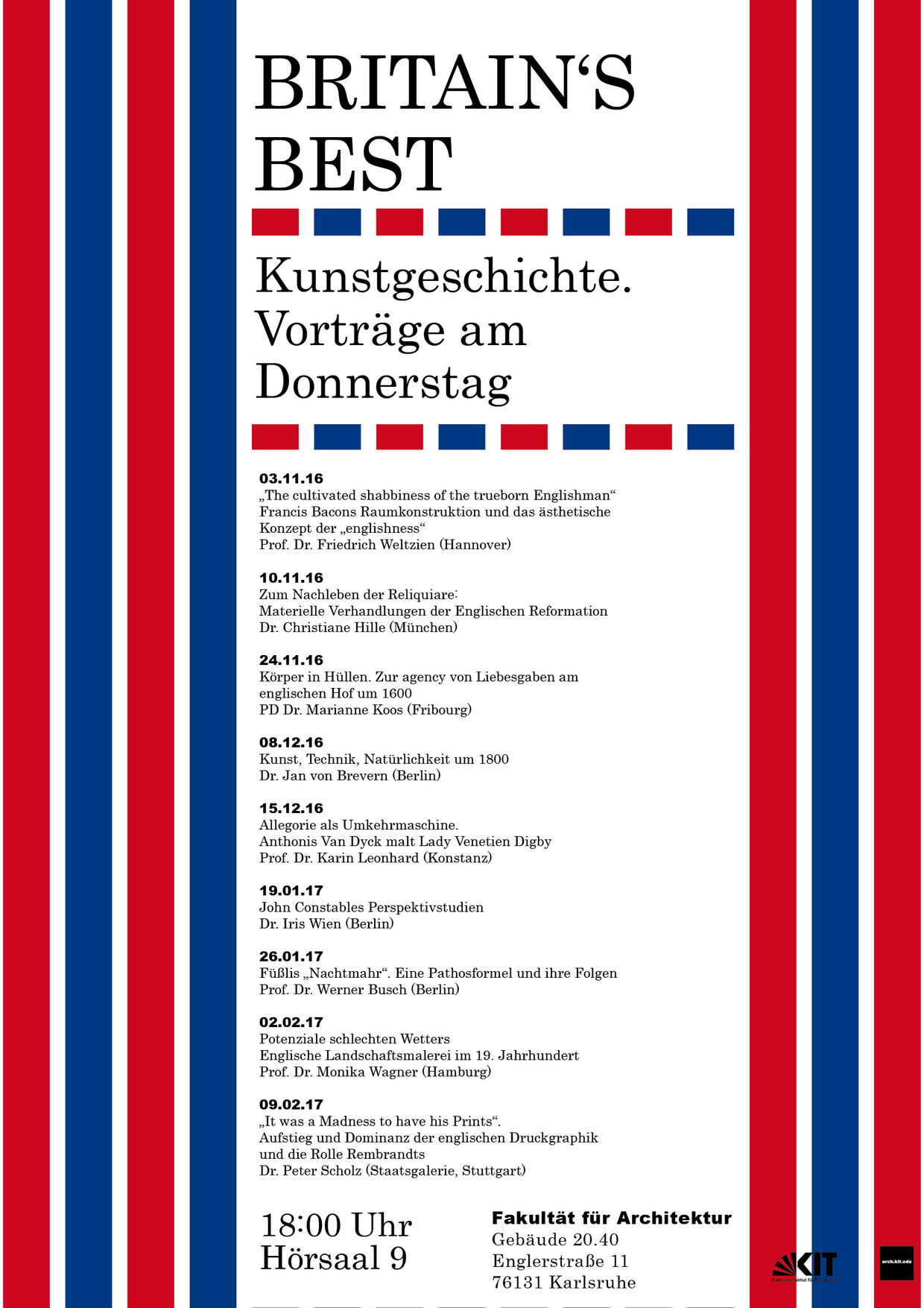Leiter:
Jesús Muñoz Morcillo
Ort:
Geb. 20.40 Architektur, Hörsaal 9 (HS9), teils online/hybrid
Uhrzeit und Termine:
Donnerstags, 17.30 – 19:00 Uhr
Link für Zoom-Teilnehmende:
https://kit-lecture.zoom.us/j/64572686671?pwd=bys0N1dmY2tkQm15dDN2N1JYSDFMUT09
3.11.2022 The Power of Flowers: Сarpets, Nature and Genealogical Myths in the Eighteenth-Century Cossack Hetmanate
Halyna Kohut, Ivan Franko National University of Lviv Ukraine
17.11.2022 Geoasthetics of the Wasteocene: Contemporary Artistic Research of Mexico City’s Lakes
Omar Olivares Sandoval, Universidad Autónoma de México
01.12.2022 Animals on the Move. The Global Zoo in the Long Nineteenth Century
Oliver Hochadel, CSIC – Institución Milá y Fontanals (IMF), Barcelona
08.12.2022 Kenji Yanobe's Atom Suit Project in Chornobyl: An Ecocritical and New Materialist Interpretation
Nazar Kozak, Ethnology Institute of the National Academy of Sciences of Ukraine
09.02.2023 Greek Mythology and the Aesthetics of Earthly Entanglements. On the Book Anthropozän? Die Ökologische Frage und der Mensch, der sie stellt (2022)
Jesús Muñoz Morcillo, Karlsruher Institut für Technology
16.02.2023 The Role of Waste Management and Ecocritical Discourse in the Conservation of Italian Fascist Monuments
Sophia Farmer, University of Arkansas – Fort Smith
The causes of climate emergency are rooted in aesthetic perceptions and cultural habits that have not been challenged for hundreds of years. In the series of talks titled „Global Perspectives on Art and Ecology, “ art and science historians discuss how to identify such visual and cultural practices and negotiate art as an ecological transformative power. Renowned scholars such as Halyna Kohut (currently visiting research fellow at KIT), Nazar Kozak, and Oliver Hochadel will delve into ecocritical perspectives and art responses to ecological disasters.
 |
16.02.: The Role of Waste Management and Ecocritical Discourse in the Conservation of Italian Fascist Monuments Throughout Italy, there are monuments, urban and agricultural structures, and ephemera that date to the era of fascism. While Italy has worked to distance itself from this dark legacy, these sites remain visible and even functional. Many of the monumental urban planning projects such as the Roman Forum and the environmental programs that resulted in new agricultural lands and national parks such as Gran Paradiso have been divorced from their fascist origins and incorporated into the cultural legacy of the nation. Yet others bearing overt references to Benito Mussolini and the fascist regime reveal and even at times promote this difficult history. The question of what to do with these sites and objects has been the subject of much debate both within scholarly circles and popular media. Reframing the dialogue surrounding the conservation of fascism’s legacy through the lenses of waste studies and waste management can reveal the lasting environmental implications of both preservation and erasure. This paper will serve as an exploratory assessment of notable but controversial sites of fascist material culture that are treated as both historical fragments worthy of preservation and as piles of trash in need of clean up and material redistribution. As a starting point, I reflect upon the DUX trees at Monte Giano, the Monument to Italians Fallen in Africa at Syracuse, and the Bolzano Victory Monument. I propose contemporary artistic and scholarly interventions as a low impact and low waste solution, which could allow trouble or counter the fascist signification of these sites. With this study, I seek to initiate a larger conversation around the role of waste in the discussion of fascist environmental projects, colonial monuments, and victory markers. |
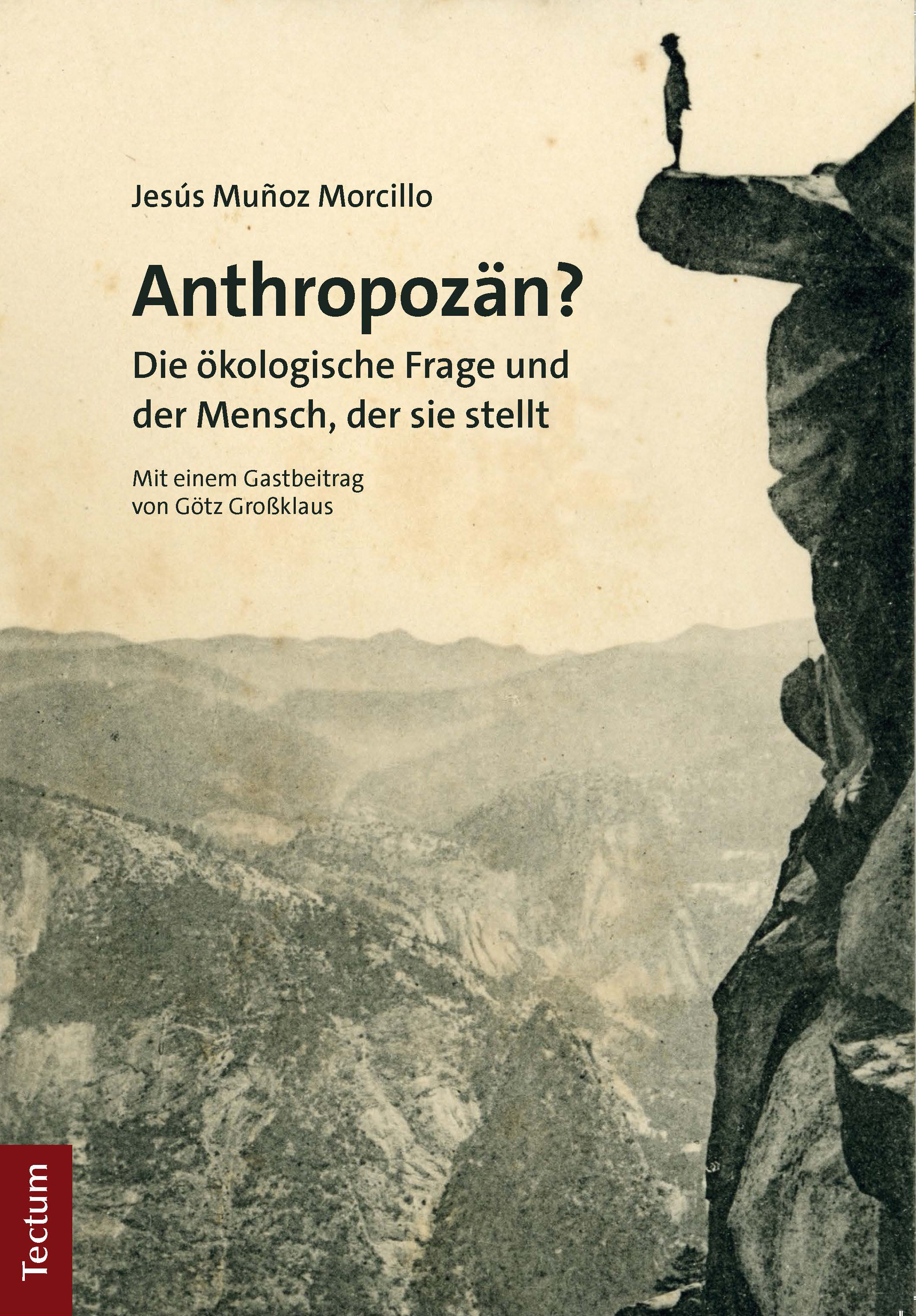 |
09.02.: Greek Mythology and the Aesthetics of Earthly Entanglements. On the Book Anthropozän? Die Ökologische Frage und der Mensch, der sie stellt (2022) As part of the lecture series "Global Perspectives on Art and Ecology," Jesús Muñoz Morcillo presents the newly published book "Anthropozän? Die Ökologische Frage und der Mensch, der sie stellt" (Baden-Baden: Tectum, December 2022). The causes of climate change and species loss are rooted, among other things, in cultural habits and aesthetic ideas that have not been questioned for centuries. Identifying and challenging these helps warn the world about cultural practices heading toward planetary catastrophe. The book "Anthropocene?" delves into the cultural history of ecology and asks both about the invention of nature in words and images and about the human being (anthropos) who poses the ecological question. In his talk, Muñoz Morcillo will discuss the general outlines of the book with a particular focus on the interplay between reinterpretations of Greek mythology and aesthetic approaches in contemporary ecological discourse. |
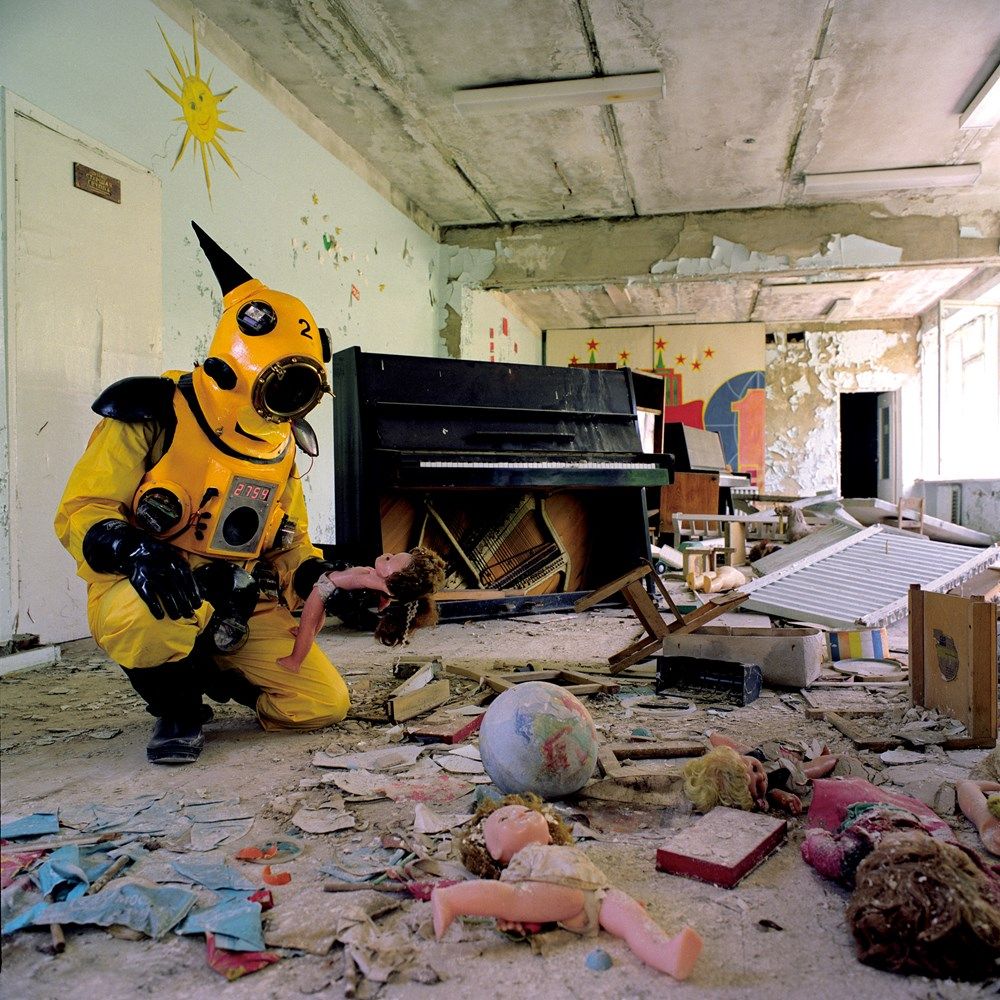 |
8.12.: Kenji Yanobe's Atom Suit Project in Chornobyl: An Ecocritical and New Materialist Interpretation In this paper, I examine the Atom Suit art project staged by the Japanese artist Kenji Yanobe at the site of the Chornobyl nuclear disaster in June 1997. Resisting any simplistic definition in terms of its genre or media, the Atom Suit project emerges in multiple avatars – as an actual suit (an object), a performance featuring the suit, and a set of photographs, documenting the performance. The scholarship amplifies a sense of complex imbrications by portraying Yanobe's project as a discursive chimera that produces divergent messages and affects: comical and serious at the same time. I aim to further complicate the issue by drawing inspiration from two theoretical perspectives that are still relatively new in art history -- ecocriticism and new materialism. The ecocriticism with its focus on the environmental significance of artworks suggests considering the relation of the Atom Suit project to the Chornobyl disaster on the site of which it was staged. The new materialism, in turn, with its questioning of the very divisions between nature and culture suggests focusing on the effectivity of nonhuman materialities in the production of the project. As the world faces harsh ecological emergencies, the proposed dual line of inquiry not only contributes to the timely discourse on art and ecology but de-privileges humans in that discourse, exposing the artistic agency of matter.
Nazar Kozak is a Senior Research Scholar at the Department of Art History at the Ethnology Institute of the National Academy of Sciences of Ukraine. He received his Ph.D. from the Lviv Academy of Arts. Kozak's research has primarily focused on Byzantine and post-Byzantine art. He has authored the book Image and Authority: Royal Portraits in the Art of Kyivan Rus of the Eleventh Century (Lviv, 2007). More recently Kozak also developed an interest in contemporary art studies, in which he explores art’s agency in crises such as revolutions, wars, and ecological disasters. |
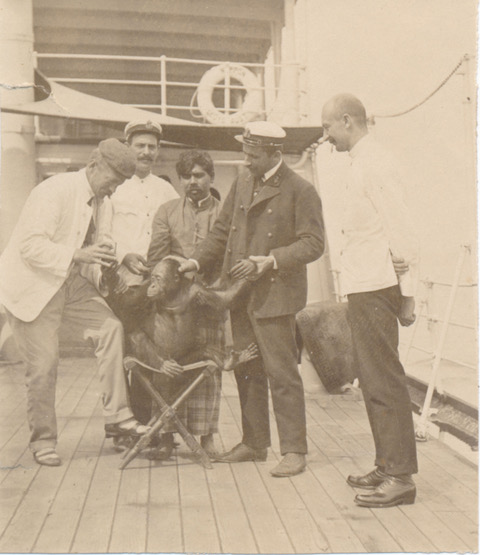 |
1.12.: Animals on the move. The global zoo in the long nineteenth century The zoological garden is a child of the nineteenth century. Initially a Western European phenomenon it soon spread around the globe. By 1900 there were zoos on every continent. From early on these institutions were very much aware of one another. Their specific challenges, in particular how to keep exotic creatures alive as well as the global animal trade, bound them together. This mutual interest generated numerous “zoo journeys”, publications, surveys, and reform schemes, transcending national borders, well before the zoos formally organized themselves in international associations in the twentieth century.
This paper will apply new approaches from global history to the history of the zoo. It will attempt to trace “the rise of global uniformities” (C.A. Bayly) with respect to how zoos were built, run and understood by its diverse publics, ranging from naturalists, acclimatizers, animal traders and educators to the general public. Yet this paper will also ask for the specific local contexts of individual zoos. How can these two perspectives, the global and the local one, be combined? How might we talk about the zoos of Antwerp, Buenos Aires, Cairo, Calcutta, Melbourne and Philadelphia in a fruitful manner?
This paper will describe the nineteenth century zoo as a large network in which knowledge but also animals and people circulated. And it will emphasize that this network was uneven, patchy, hierarchical and transient. This global zoo network bore the imprint of the colonial world order and was shaped by the asymmetries in political power, economic resources and knowledge about the natural world.
Vita Oliver Hochadel is a historian of science and a tenured researcher at the Institució Milà i Fontanals (CSIC Barcelona). He held academic positions in Germany, Austria, Switzerland, the United States and Spain. His research focuses on the relationship between science and its publics. His case studies include electricity as a public science in the German Enlightenment, the history of the zoo in the nineteenth century, the history of human origins research in the twentieth century and the urban history of science around 1900. |
 |
17.11. Geoasthetics of the Wasteocene: Contemporary Artistic Research of Mexico City’s Lakes Despite the fact that the extensive lakes of Mexico’s basin were dried up through colonial and modern enterprises, the utopian urbanistic view of Mexico City as the “Venice of America” persists as an imagined counterpart of the dystopian chaos and the formless expansion of the present-day metropolis. Although the water is no longer visible, the lakes have evolved as an identifiable space of material and symbolic implications for the city’s inhabitants. I examine two contemporary artistic initiatives: the Mexico City-based artist Adriana Salazar's All Things Living, All Things Dead: Animist Museum of Texcoco Lake and Encyclopedia of Living Things; and the work of the interdisciplinary research collective, Mexican Institute of Intersticiology. I explore how both initiatives shift the paradigms used to conceptualize the relationship between water and the city, urbanity, and the natural environment that has historically shaped common notions of living in Mexico City. These geoaesthetic research projects engage a conjoined cultural/natural history of Mexico City. They are part of a longer practice in Latin American art of working with the aesthetics of remnants, trash, and fragments. I argue that these practices bring attention to larger environmental ensembles, by investigating the layers of soil as a space for collective memories, material and political entanglements, and agencies that resist becoming a past. As research sustained through unsteady epistemologies, continuously moving back and forth from the invention of their object to the investigation of specific materiality, they can be thought in conjunction with critical engagements towards reflections of the so-called Wasteocene. Vita Omar Olivares Sandoval is Associate Researcher in Instituto de Investigaciones Estéticas at Universidad Nacional Autónoma de México (UNAM), Mexico City. He is the author of the book: From Landscape to Anatomy: José María Velasco and the Nineteenth-Century Scientific Knowledge (UNAM, forthcoming). |
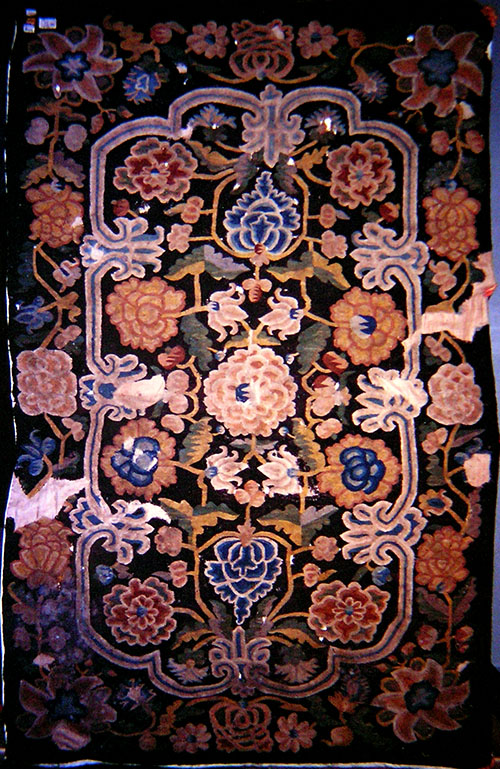 |
The Power of Flowers: Сarpets, Nature and Genealogical Myths in the Eighteenth-Century Cossack Hetmanate Vita Halyna Kohut is an associate professor at the Faculty of Culture and Arts at the Ivan Franko National University of Lviv, Ukraine. She received her PhD from Lviv National Academy of Arts. Her research interests concern the eighteenth-century textile and the twentieth-century women artists. |
